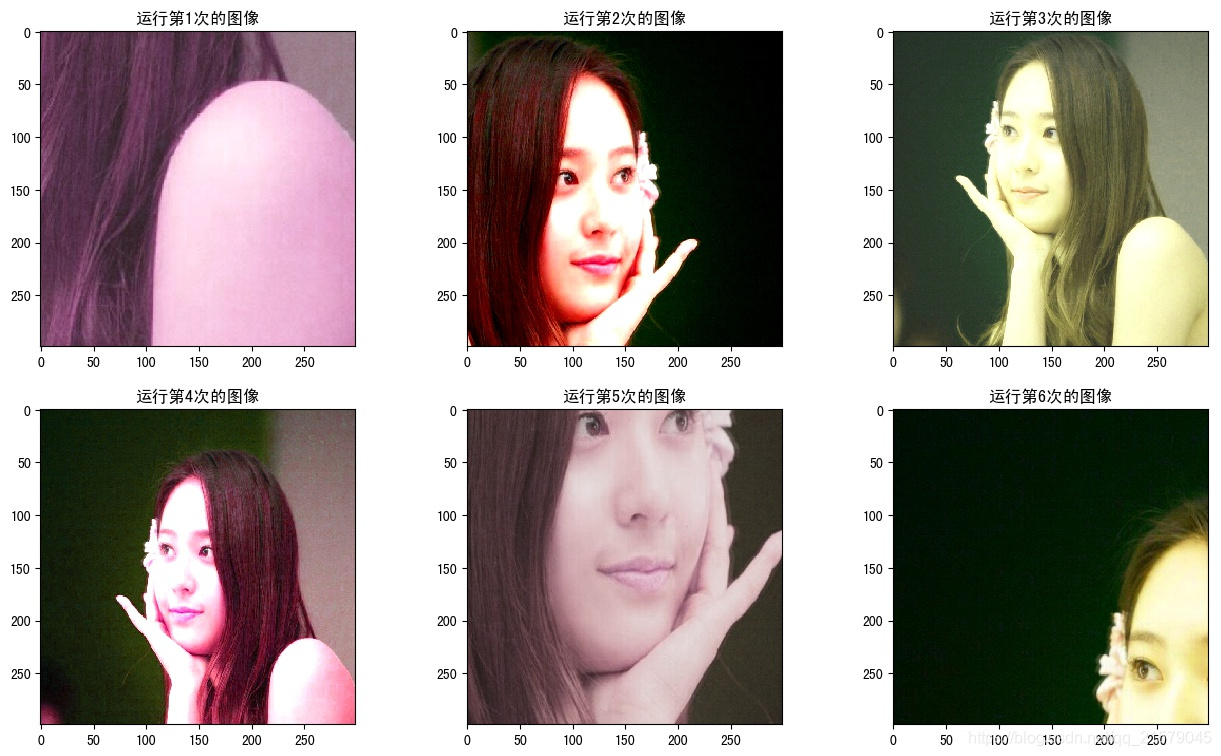参考书
《TensorFlow:实战Google深度学习框架》(第2版)
以下TensorFlow程序完成了从图像片段截取,到图像大小调整再到图像翻转及色彩调整的整个图像预处理过程。
#!/usr/bin/env python # -*- coding: UTF-8 -*- # coding=utf-8 """ @author: Li Tian @contact: 694317828@qq.com @software: pycharm @file: figure_deal_test2.py @time: 2019/1/28 11:39 @desc: 图像预处理完整样例 """ import tensorflow as tf import numpy as np import matplotlib.pyplot as plt # 给定一张图像,随机调整图像的色彩。因为调整亮度,对比度,饱和度和色相的顺序会影响最后得到的结果。 # 所以可以定义多种不同的顺序。具体使用哪一种顺序可以在训练数据预处理时随机地选择一种。 # 这样可以进一步降低无关因素对模型的影响。 def distort_color(image, color_ordering=0): if color_ordering == 0: image = tf.image.random_brightness(image, max_delta=32. / 255.) image = tf.image.random_saturation(image, lower=0.5, upper=1.5) image = tf.image.random_hue(image, max_delta=0.2) image = tf.image.random_contrast(image, lower=0.5, upper=1.5) elif color_ordering == 1: image = tf.image.random_saturation(image, lower=0.5, upper=1.5) image = tf.image.random_brightness(image, max_delta=32. / 255.) image = tf.image.random_contrast(image, lower=0.5, upper=1.5) image = tf.image.random_hue(image, max_delta=0.2) elif color_ordering == 2: # 还可以定义其他的排列,但是在这里就不再一一列出了。 # ... pass return tf.clip_by_value(image, 0.0, 1.0) # 给定一张解码后的图像、目标图像的尺寸以及图像上的标注框,此函数可以对给出的图像进行预处理。 # 这个函数的输入图像是图像识别问题中原始的训练图像,而输出则是深井网络模型的输入层。注意这里 # 只是处理模型的训练数据,对于预测的数据,一般不需要使用随机变换的步骤。。 def preprocess_for_train(image, height, width, bbox): # 如果没有提供标注框,则认为整个图像就是需要关注的部分。 if bbox is None: bbox = tf.constant([0.0, 0.0, 1.0, 1.0], dtype=tf.float32, shape=[1, 1, 4]) # 转换图像张量的类型。 if image.dtype != tf.float32: image = tf.image.convert_image_dtype(image, dtype=tf.float32) # 随机截取图像,减小需要关注的物体大小对图像识别算法的影响。 bbox_begin, bbox_size, _ = tf.image.sample_distorted_bounding_box(tf.shape(image), bounding_boxes=bbox) distorted_image = tf.slice(image, bbox_begin, bbox_size) # 将随机截取的图像调整为神经网络层输入层的大小。大小调整的算法是随机选择的。 distorted_image = tf.image.resize_images(distorted_image, [height, width], method=np.random.randint(4)) # 随机左右翻转图像。 distorted_image = tf.image.random_flip_left_right(distorted_image) # 使用一种随机的顺序调整图像色彩。 distorted_image = distort_color(distorted_image, np.random.randint(2)) return distorted_image image_raw_data = tf.gfile.FastGFile('F:/Python3Space/figuredata_deal/krystal.jpg', "rb").read() with tf.Session() as sess: img_data = tf.image.decode_jpeg(image_raw_data) boxes = tf.constant([[[0.05, 0.05, 0.9, 0.7], [0.35, 0.47, 0.5, 0.56]]]) # 开始绘图 plt.rcParams['font.sans-serif'] = ['SimHei'] # 步骤一(替换sans-serif字体) plt.rcParams['axes.unicode_minus'] = False # 步骤二(解决坐标轴负数的负号显示问题) fig1 = plt.figure(1, (16, 9), dpi=100) # 运行6次获得6种不同的图像。 for i in range(6): # 将图像的尺寸调整为299*299. ax = plt.subplot(2, 3, i+1) ax.set_title('运行第' + str(i+1) + '次的图像') result = preprocess_for_train(img_data, 299, 299, boxes) plt.imshow(result.eval()) fig1.subplots_adjust(wspace=0.1) # plt.tight_layout() plt.savefig('F:/Python3Space/figuredata_deal/图像预处理完整样例.jpg', bbox_inches='tight')
运行结果:
